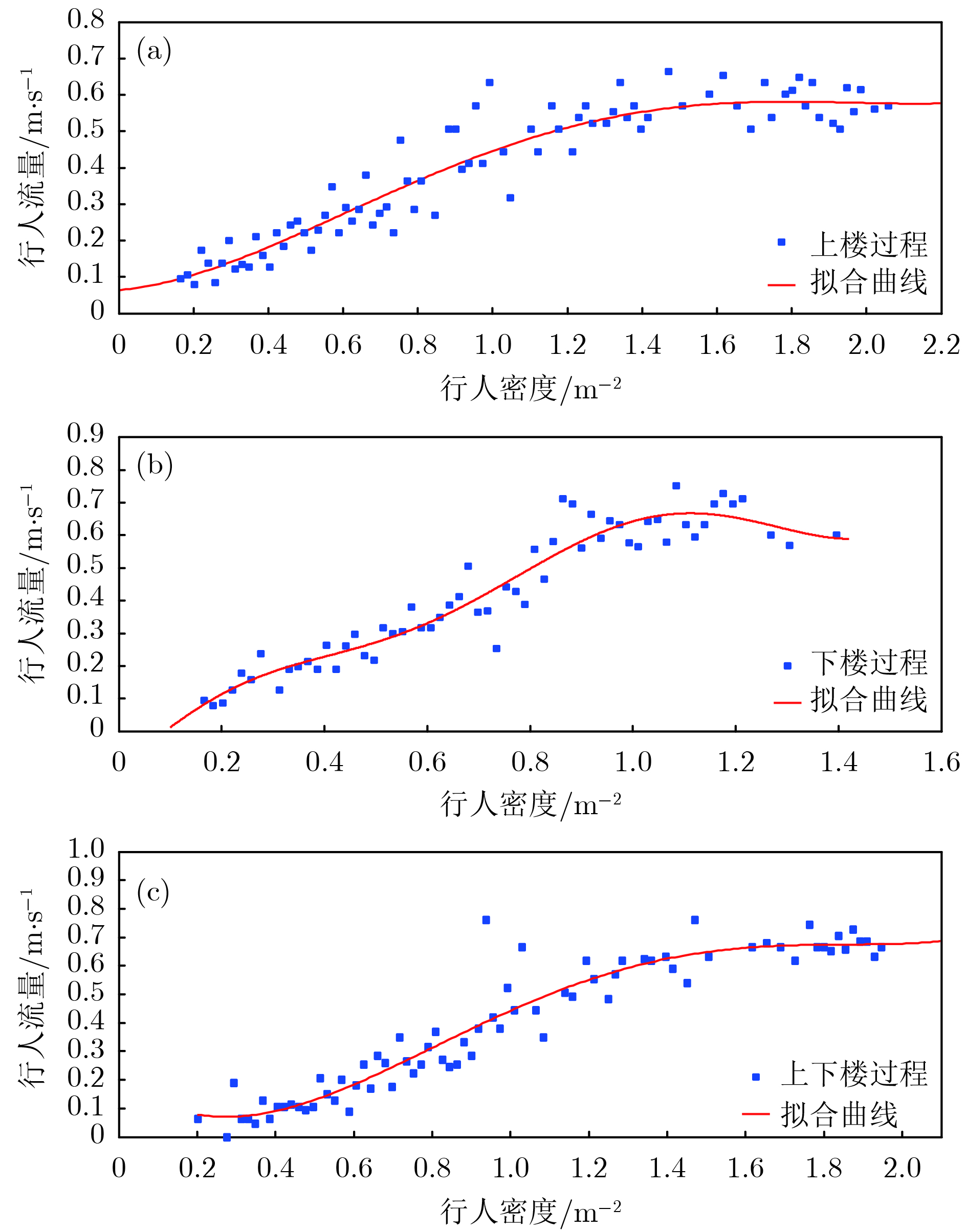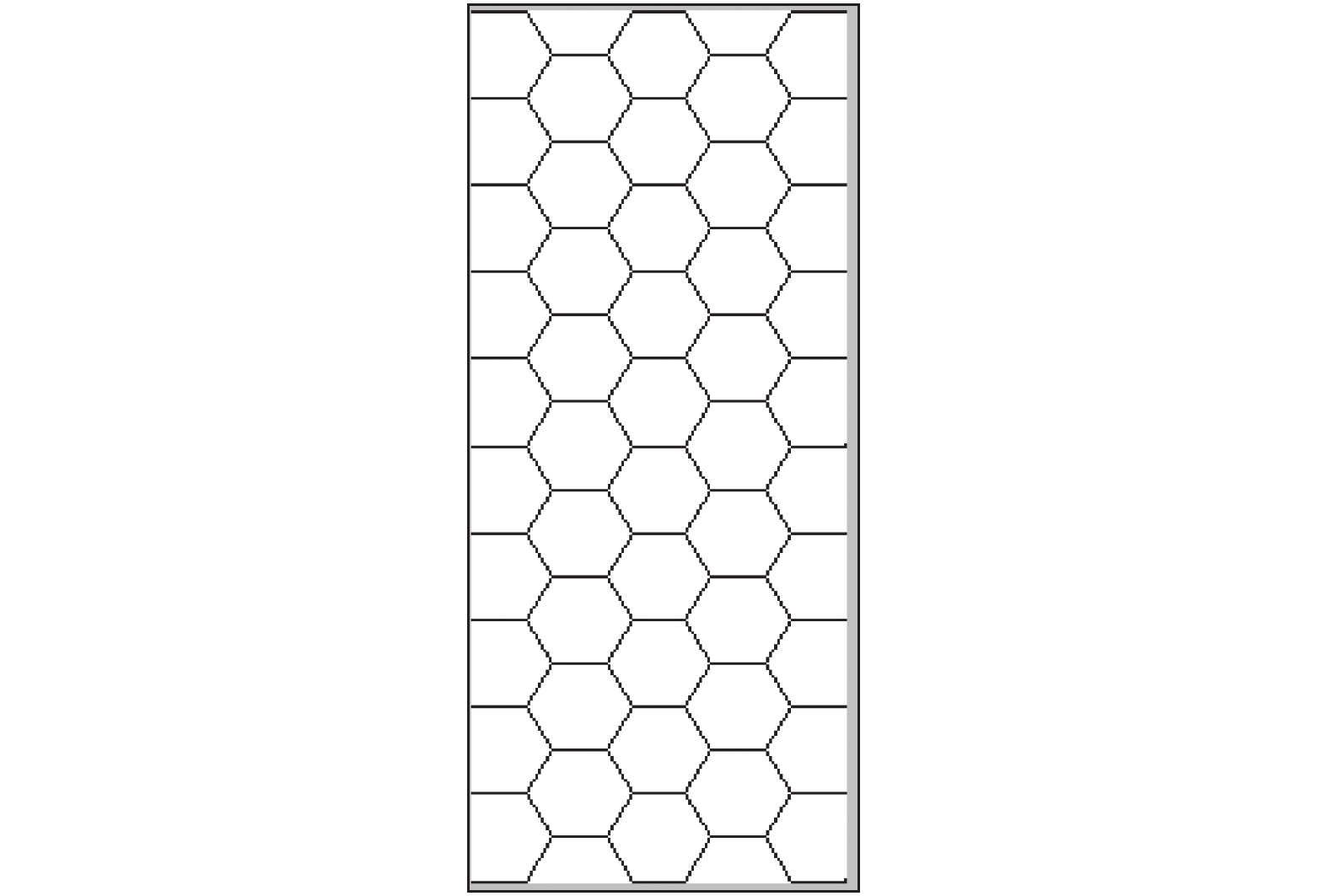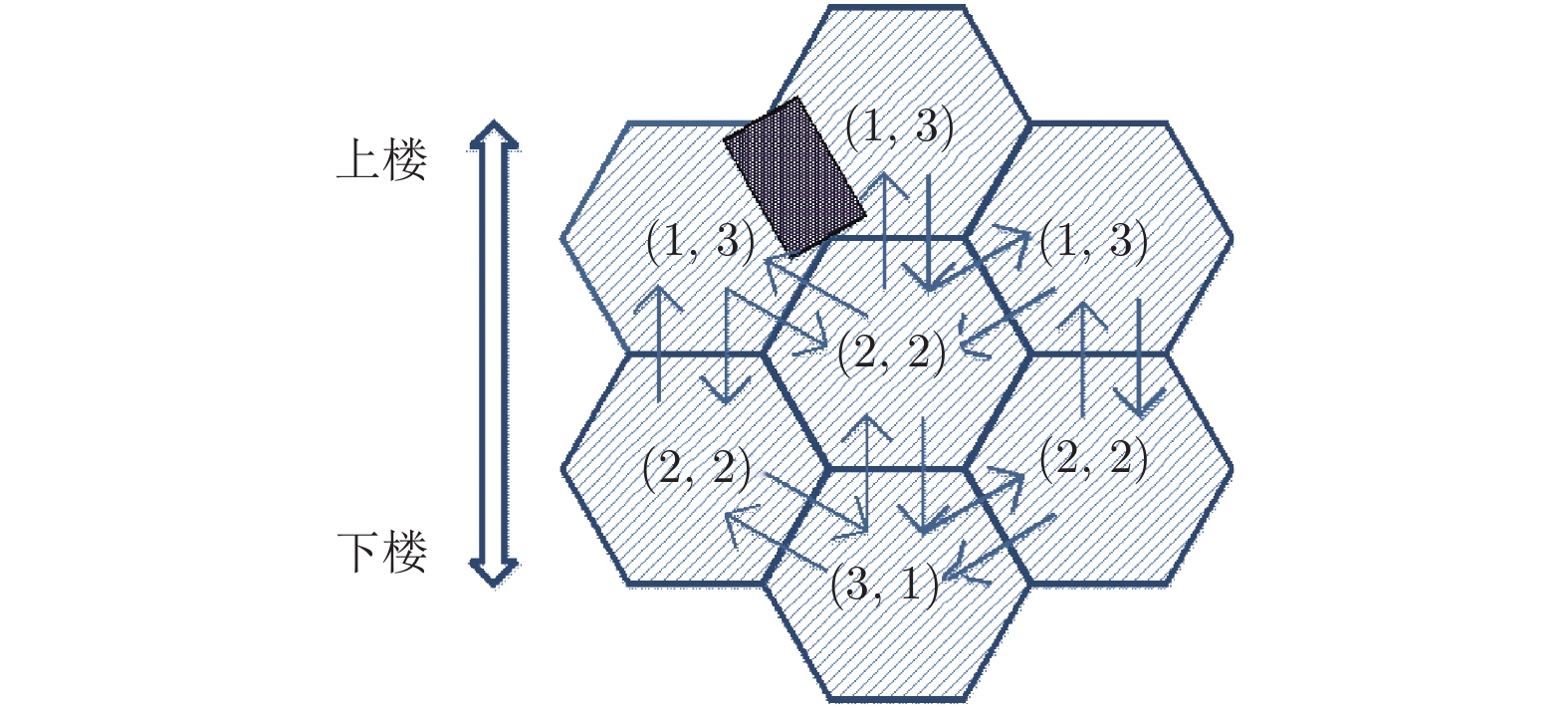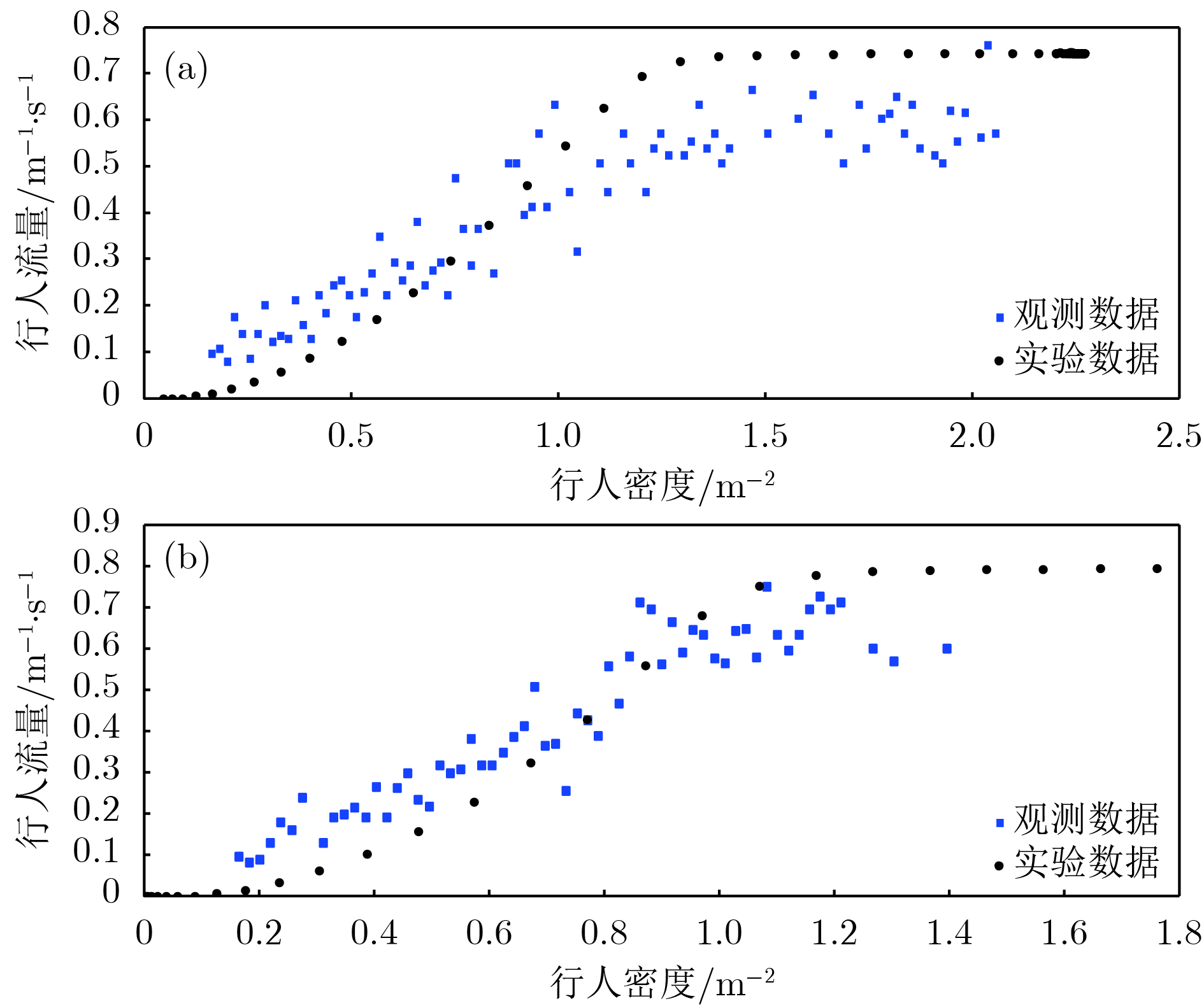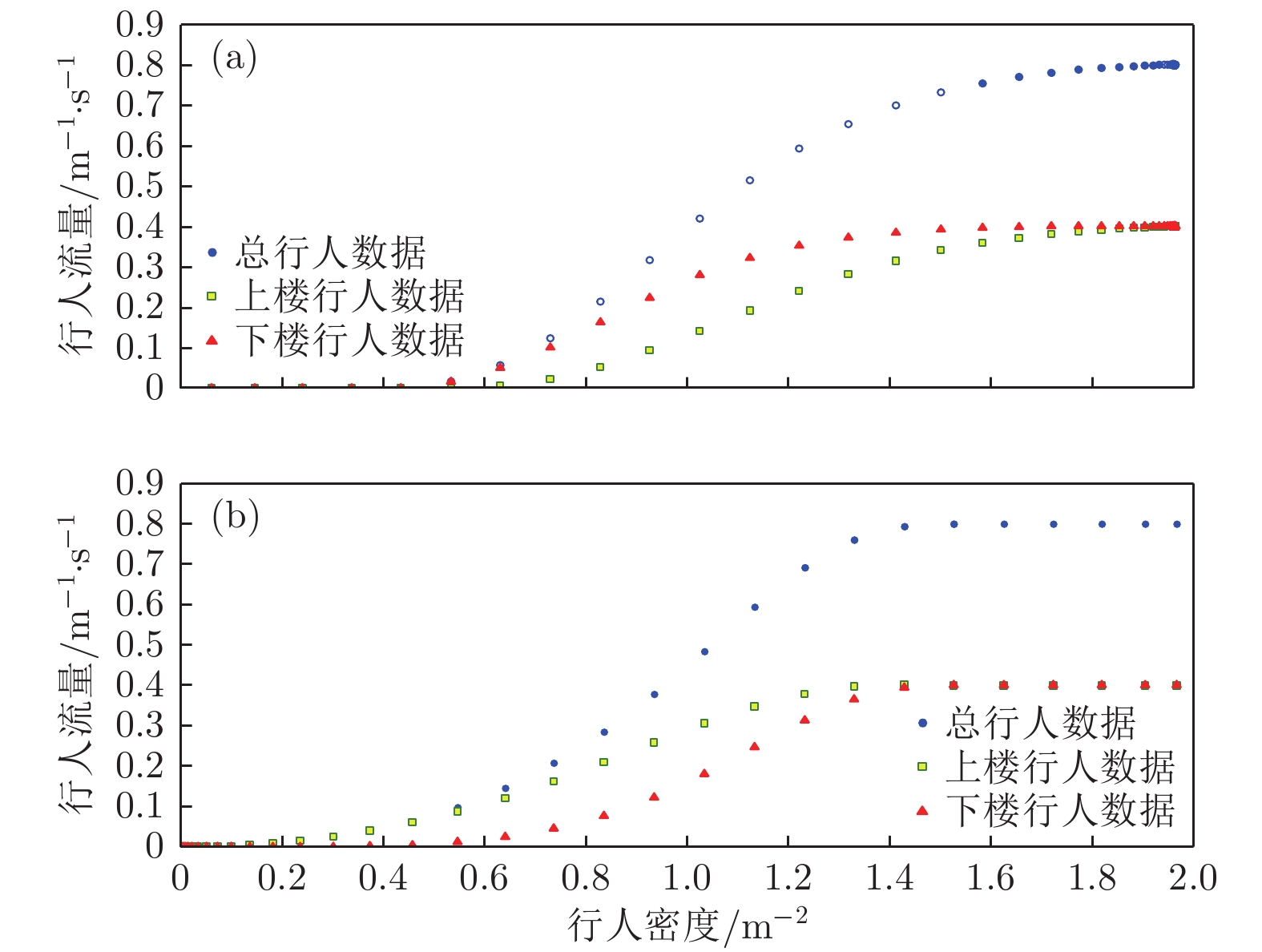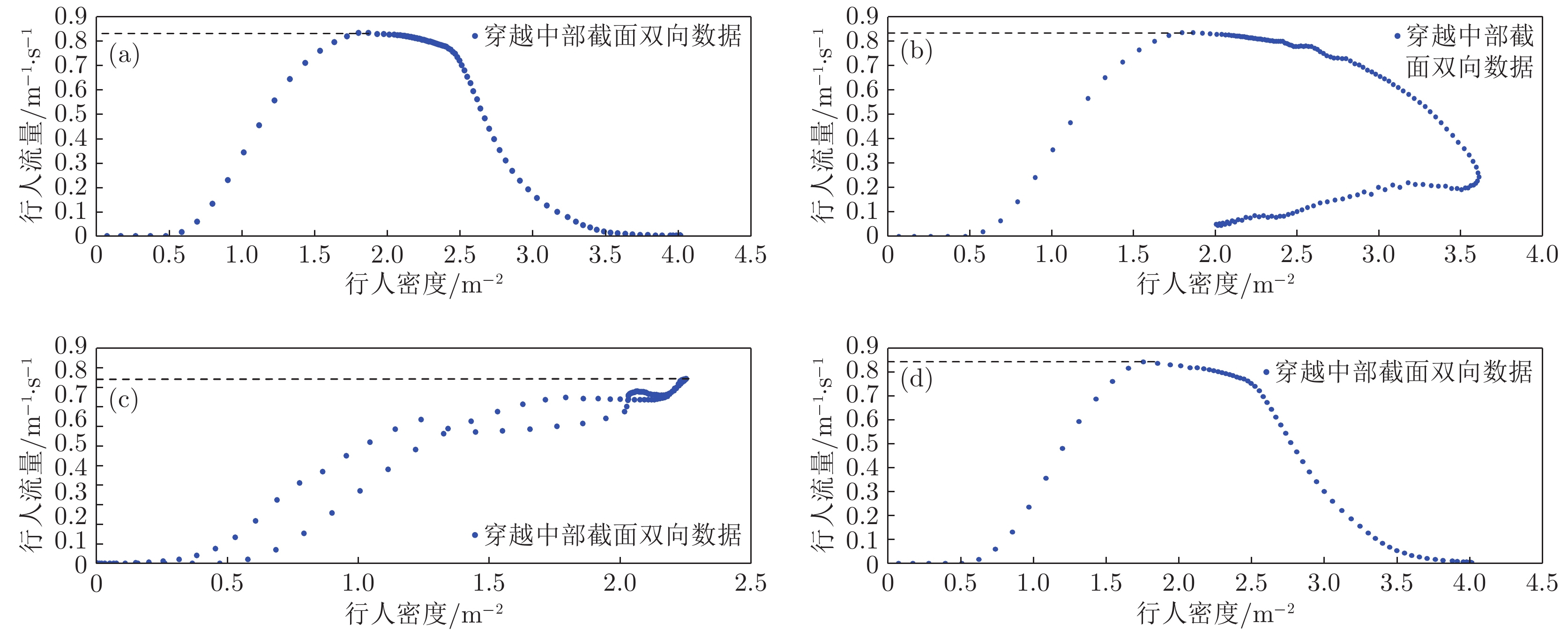-
针对楼梯区域行人运动进行观测实验, 获得行人上下楼过程中的运动数据, 通过对数据进行整理与分析, 绘制不同过程中流量-密度变化关系图. 通过对流密关系图进行定量分析, 掌握楼梯区域行人运动特征, 并改进原有元胞传输模型, 提出楼梯行人运动模型, 仿真模拟行人运动过程. 模型中, 引入势能修正系数, 利用异向行人对元胞势能的影响来改变行人的路径选择; 引入流量修正系数, 描述不同的物理参数对元胞边界最大流量的影响; 引入偏移系数, 修正移动规则, 增强优先方向对行人路径选择行为的影响. 然后, 通过比较仿真结果与实验数据, 对模型及引入参数进行验证和校准. 最后, 利用校正模型, 模拟研究楼梯区域对向行人运动过程, 并对势能修正参数进行了灵敏度分析, 进一步研究模型参数对行人运动的影响. 研究表明, 该模型可以模拟刻画楼梯区域行人运动过程, 同时验证了楼梯区域行人集散效率跟行人到达率与行人路径选择有关.The aim of this study is to address the following issues: 1) revealing the typical behaviors and properties of pedestrian movement when going upstairs and downstairs; 2) constructing a pedestrian evacuation model to formulate the walking process of pedestrians in stair area; 3) verifying that the cell transmission model widely used in the two-dimensional walking space can also be applied to the three-dimensional staircase area. Firstly, an observation experiment is carried out to gain the pedestrian movement data in the process of going upstairs and downstairs. By collating the data, the relation between density and flow in the unidirectional process of going upstairs or going downstairs, and in the bi-directional process of going upstairs and downstairs, are drawn respectively. Then, by analyzing the fundamental diagrams, several characteristics of pedestrian movement in stair area are revealed. Based on these characteristics, an extended cell transmission model is proposed. In this model, a potential correction coefficient is introduced to change the route choice of pedestrians by using the influence of different directional pedestrians on the potential; a flow modification coefficient is introduced to describe the effect of physical parameters on the maximum flow at the boundary between two neighboring cells; and an offset coefficient is introduced to correct movement rules and strengthen the influence of preferential direction on pedestrian route choice. Further, simulations relied on the proposed model are conducted. By comparing the simulation results with the experimental data, the model is calibrated. Then the calibrated model is employed to formulate the pedestrian movement in stair area, and the sensitivity of the potential correction parameter is also discussed. The simulation results indicate that the proposed model can successfully reproduce the movement of pedestrians on stair. Moreover, the route-choice behaviors of pedestrians can be directed by varying the values of the potential correction coefficient, which can present important information about optimizing the evacuation process of pedestrians on stair, thereby reducing the risk of an accident, such as congesting and treading.
-
Keywords:
- cellular transmission model /
- pedestrian flow on stairs /
- flow-density relationship /
- sensitivity analysis
[1] Galea E R, Sharp G, Lawrence P J 2008 J. Fire Prot. Eng. 18 291
 Google Scholar
Google Scholar
[2] Yeo S K, He Y P 2009 Fire Saf. J. 44 183
 Google Scholar
Google Scholar
[3] Yang L Z, Rao P, Zhu K J, Liu S B, Zhan X 2012 Saf. Sci. 50 1173
 Google Scholar
Google Scholar
[4] Hoskins B L, Milke J A 2012 Fire Saf. J. 48 49
 Google Scholar
Google Scholar
[5] 岳昊, 张旭, 陈刚, 邵春福 2012 物理学报 61 130509
 Google Scholar
Google Scholar
Yue H, Zhang X, Chen G, Shao C F 2012 Acta Phys. Sin. 61 130509
 Google Scholar
Google Scholar
[6] Shields T J, Boyce K E 2009 Fire Saf. J. 44 881
 Google Scholar
Google Scholar
[7] 岳昊, 邵春福, 关宏志, 段龙梅 2010 物理学报 59 4499
 Google Scholar
Google Scholar
Yue H, Shao C F, Guan H Z, Duan L M 2010 Acta Phys. Sin. 59 4499
 Google Scholar
Google Scholar
[8] 陈亮, 郭仁拥, 塔娜 2013 物理学报 62 050506
Chen L, Guo R Y, Ta N 2013 Acta Phys. Sin. 62 050506
[9] 永贵, 黄海军, 许岩 2013 物理学报 62 010506
Yong G, Huang H J, Xu Y 2013 Acta Phys. Sin. 62 010506 (in Chinese)
[10] Sano T, Ronchi E, Minegishi Y, Nilsson D 2017 Fire Saf. J. 89 77
 Google Scholar
Google Scholar
[11] 任刚, 陆丽丽, 王炜 2012 物理学报 61 144501
 Google Scholar
Google Scholar
Ren G, Lu L L, Wang W 2012 Acta Phys. Sin. 61 144501
 Google Scholar
Google Scholar
[12] Hughes R L 2002 Trans. Res. B 32 507
[13] 董立耘, 陈立, 段晓茵 2015 物理学报 64 220505
 Google Scholar
Google Scholar
Dong L Y, Chen L, Duan X Y 2015 Acta Phys. Sin. 64 220505
 Google Scholar
Google Scholar
[14] Huang H J, Guo R Y 2008 Phys. Rev. E 78 021131
 Google Scholar
Google Scholar
[15] Helbing D, Molnar P 1995 Phys. Rev. E 51 4282
 Google Scholar
Google Scholar
[16] Helbing D, Farkas I, Vicsek T 2000 Nature 407 487
 Google Scholar
Google Scholar
[17] 杨凌霄, 赵小梅, 高自友, 郑建风 2011 物理学报 60 100501
 Google Scholar
Google Scholar
Yang L X, Zhao X M, Gao Z Y, Zheng J F 2011 Acta Phys. Sin. 60 100501
 Google Scholar
Google Scholar
[18] Qu Y C, Gao Z Y, Xiao Y, Li X G 2014 Saf. Sci. 70 189
 Google Scholar
Google Scholar
[19] Burstedde C, Klauck K, Schadschneider A, Zittart J 2001 Physica A 295 507
 Google Scholar
Google Scholar
[20] Guo R Y, Guo X 2012 Chin. Phys. B 21 018901
 Google Scholar
Google Scholar
[21] Guo R Y, Huang H J, Wong S C 2011 Trans. Res. B 45 490
 Google Scholar
Google Scholar
[22] 霍非舟 2015 博士学位论文 (合肥:中国科学技术大学)
Huo F Z 2015 Ph. D. Dissertation (Hefei: University of Science and Technology of China) (in Chinese)
[23] Fujiyama T, Tyler N 2010 Transport. Plan. Techn. 33 177202
 Google Scholar
Google Scholar
[24] Xu X, Song W G 2009 Build. Environ. 44 1039
 Google Scholar
Google Scholar
[25] Ma J, Song W G, Tian W, Lo S M, Liao G X 2012 Saf. Sci. 50 1665
 Google Scholar
Google Scholar
[26] 张培红, 鲁韬, 陈宝智, 卢兆明 2005 人类工效学 11 8
 Google Scholar
Google Scholar
Zhang P H, Lu T, Chen B Z, Lu Z M 2005 Chin. J. Ergon. 11 8
 Google Scholar
Google Scholar
[27] Kretz T, Grunebohm A, Kessel A, Klupfel H, Meyer Konig H, Schreckenberg M 2008 Saf. Sci. 46 72
 Google Scholar
Google Scholar
[28] Peacock R D, Hoskins B L, Kuligowski E D 2012 Saf. Sci. 50 1655
 Google Scholar
Google Scholar
-
图 3 (a) 上楼过程中楼梯区域平均流量-密度散点图及关系曲线; (b) 下楼过程中楼梯区域平均流量-密度散点图及关系曲线; (c) 上下楼过程中楼梯区域平均流量-密度散点图及关系曲线
Fig. 3. (a) The relation of the density against the average flow when going upstairs; (b) the relation of the density against the average flow when going downstairs; (c) the relation of the density against the average flow when going upstairs and downstairs.
图 10 (a) 稳定状态之前楼梯区域双向运动的流量-密度关系图; (b) 稳定状态之后楼梯区域双向运动的流量-密度关系图
Fig. 10. (a) Fundamental density-flow diagram of the bi-directional pedestrian flow on the stairs before the stabilization process; (b) fundamental density-flow diagram of the bi-directional pedestrian flow on the stairs after the stabilization process.
图 11 楼梯区域双向运动的流量-密度关系散点图 (a) δ = 1.0, θ = 0.8; (b) δ = 0.6, θ = 0.8; (c) δ = 0.3, θ = 0.8; (d) δ = 1.4, θ = 0.8
Fig. 11. Fundamental density-flow diagram of the bi-directional pedestrian flow on the stairs when (a) δ = 1.0 and θ = 0.8; (b) δ = 0.6 and θ = 0.8; (c) δ = 0.3 and θ = 0.8; (d) δ = 1.4 and θ = 0.8.
图 12 楼梯区域双向运动中上行行人(左)、下行行人(中)及双向行人(右)模拟结果伪彩图(颜色深浅表示每个元胞内行人数量与元胞容量之比) (a) δ = 1.0, θ = 0.8; (b) δ = 0.6, θ = 0.8; (c) δ = 0.3, θ = 0.8; (d) δ = 1.4, θ = 0.8
Fig. 12. Pseudo-color plots delineating the ratio of the number of pedestrians in each cell to the capacity of the cell during the walking process of bi-directional pedestrian flows on the stairs (upward flow in the left, downward flow in the middle, and bi-directional flows in the right) when δ = 1.0 and θ = 0.8 in (a), δ = 0.6 and θ = 0.8 in (b), δ = 0.3 and θ = 0.8 in (c), δ = 1.4 and θ = 0.8 in (d).
表 1 实验楼梯的基本参数
Table 1. The basic parameters of the staircases.
有效宽度/m 有效长度/m 台阶数/级 台阶高度/m 台阶宽度/m 楼梯坡度 tanθ 有效面积/m2 3.16 8.95 38 0.15 0.37 0.40 28.28 表 2 楼梯区域上的部分观测数据
Table 2. Some observation data on staircase area.
数据
编号行人数量
N/人流入量
IF/人·$\Delta t$−1流出量
OF/人·$\Delta t$−1T T+10 s U D U D 1 11 13 0 8 0 6 2 25 26 0 12 0 11 3 29 24 0 12 0 17 4 32 31 0 21 0 22 5 33 28 0 19 0 14 6 18 20 12 0 10 0 7 39 36 14 0 17 0 8 29 33 21 0 17 0 9 54 54 12 0 12 0 10 14 12 8 0 10 0 11 18 19 3 3 2 3 12 26 28 6 9 5 8 13 50 46 9 13 10 16 14 48 44 8 8 8 12 15 38 35 8 11 10 12 注: U, 上行; D, 下行. 表 3 稳定过程中的部分流量数据
Table 3. Some flow data in the stabilization process.
时间步 60 61 62 63 64 65 66 67 68 上楼流量/人·s−1 6.0 6.0 6.0 6.0 6.0 6.0 6.0 6.0 6.0 下楼流量/人·s−1 6.0 6.0 6.0 6.0 6.0 6.0 6.0 6.0 6.0 时间步 80 81 82 83 84 85 86 87 88 上楼流量/人·s−1 6.0 6.0 6.0 6.0 6.0 6.0 6.0 6.0 6.0 下楼流量/人·s−1 6.0 6.0 6.0 6.0 6.0 6.0 6.0 6.0 6.0 表 4 稳定过程结束后的部分流量数据
Table 4. Some flow data after the stabilization process.
时间步 106 107 108 109 110 111 112 113 114 上楼流量/人·s−1 6.0 5.9 5.7 5.2 4.6 3.9 3.1 2.4 1.8 下楼流量/人·s−1 5.9 5.5 4.7 3.7 2.7 1.8 1.1 0.7 0.4 表 5 稳定过程结束后的部分行人数据
Table 5. Some pedestrian data after the stabilization process.
时间步 106 107 108 109 110 111 112 113 114 上楼人数/人 96.6 90.6 84.6 78.6 72.6 66.6 60.6 54.6 48.6 下楼人数/人 76.7 70.1 64.8 58.8 52.8 46.8 40.8 34.9 29.0 -
[1] Galea E R, Sharp G, Lawrence P J 2008 J. Fire Prot. Eng. 18 291
 Google Scholar
Google Scholar
[2] Yeo S K, He Y P 2009 Fire Saf. J. 44 183
 Google Scholar
Google Scholar
[3] Yang L Z, Rao P, Zhu K J, Liu S B, Zhan X 2012 Saf. Sci. 50 1173
 Google Scholar
Google Scholar
[4] Hoskins B L, Milke J A 2012 Fire Saf. J. 48 49
 Google Scholar
Google Scholar
[5] 岳昊, 张旭, 陈刚, 邵春福 2012 物理学报 61 130509
 Google Scholar
Google Scholar
Yue H, Zhang X, Chen G, Shao C F 2012 Acta Phys. Sin. 61 130509
 Google Scholar
Google Scholar
[6] Shields T J, Boyce K E 2009 Fire Saf. J. 44 881
 Google Scholar
Google Scholar
[7] 岳昊, 邵春福, 关宏志, 段龙梅 2010 物理学报 59 4499
 Google Scholar
Google Scholar
Yue H, Shao C F, Guan H Z, Duan L M 2010 Acta Phys. Sin. 59 4499
 Google Scholar
Google Scholar
[8] 陈亮, 郭仁拥, 塔娜 2013 物理学报 62 050506
Chen L, Guo R Y, Ta N 2013 Acta Phys. Sin. 62 050506
[9] 永贵, 黄海军, 许岩 2013 物理学报 62 010506
Yong G, Huang H J, Xu Y 2013 Acta Phys. Sin. 62 010506 (in Chinese)
[10] Sano T, Ronchi E, Minegishi Y, Nilsson D 2017 Fire Saf. J. 89 77
 Google Scholar
Google Scholar
[11] 任刚, 陆丽丽, 王炜 2012 物理学报 61 144501
 Google Scholar
Google Scholar
Ren G, Lu L L, Wang W 2012 Acta Phys. Sin. 61 144501
 Google Scholar
Google Scholar
[12] Hughes R L 2002 Trans. Res. B 32 507
[13] 董立耘, 陈立, 段晓茵 2015 物理学报 64 220505
 Google Scholar
Google Scholar
Dong L Y, Chen L, Duan X Y 2015 Acta Phys. Sin. 64 220505
 Google Scholar
Google Scholar
[14] Huang H J, Guo R Y 2008 Phys. Rev. E 78 021131
 Google Scholar
Google Scholar
[15] Helbing D, Molnar P 1995 Phys. Rev. E 51 4282
 Google Scholar
Google Scholar
[16] Helbing D, Farkas I, Vicsek T 2000 Nature 407 487
 Google Scholar
Google Scholar
[17] 杨凌霄, 赵小梅, 高自友, 郑建风 2011 物理学报 60 100501
 Google Scholar
Google Scholar
Yang L X, Zhao X M, Gao Z Y, Zheng J F 2011 Acta Phys. Sin. 60 100501
 Google Scholar
Google Scholar
[18] Qu Y C, Gao Z Y, Xiao Y, Li X G 2014 Saf. Sci. 70 189
 Google Scholar
Google Scholar
[19] Burstedde C, Klauck K, Schadschneider A, Zittart J 2001 Physica A 295 507
 Google Scholar
Google Scholar
[20] Guo R Y, Guo X 2012 Chin. Phys. B 21 018901
 Google Scholar
Google Scholar
[21] Guo R Y, Huang H J, Wong S C 2011 Trans. Res. B 45 490
 Google Scholar
Google Scholar
[22] 霍非舟 2015 博士学位论文 (合肥:中国科学技术大学)
Huo F Z 2015 Ph. D. Dissertation (Hefei: University of Science and Technology of China) (in Chinese)
[23] Fujiyama T, Tyler N 2010 Transport. Plan. Techn. 33 177202
 Google Scholar
Google Scholar
[24] Xu X, Song W G 2009 Build. Environ. 44 1039
 Google Scholar
Google Scholar
[25] Ma J, Song W G, Tian W, Lo S M, Liao G X 2012 Saf. Sci. 50 1665
 Google Scholar
Google Scholar
[26] 张培红, 鲁韬, 陈宝智, 卢兆明 2005 人类工效学 11 8
 Google Scholar
Google Scholar
Zhang P H, Lu T, Chen B Z, Lu Z M 2005 Chin. J. Ergon. 11 8
 Google Scholar
Google Scholar
[27] Kretz T, Grunebohm A, Kessel A, Klupfel H, Meyer Konig H, Schreckenberg M 2008 Saf. Sci. 46 72
 Google Scholar
Google Scholar
[28] Peacock R D, Hoskins B L, Kuligowski E D 2012 Saf. Sci. 50 1655
 Google Scholar
Google Scholar
计量
- 文章访问数: 10670
- PDF下载量: 136
- 被引次数: 0













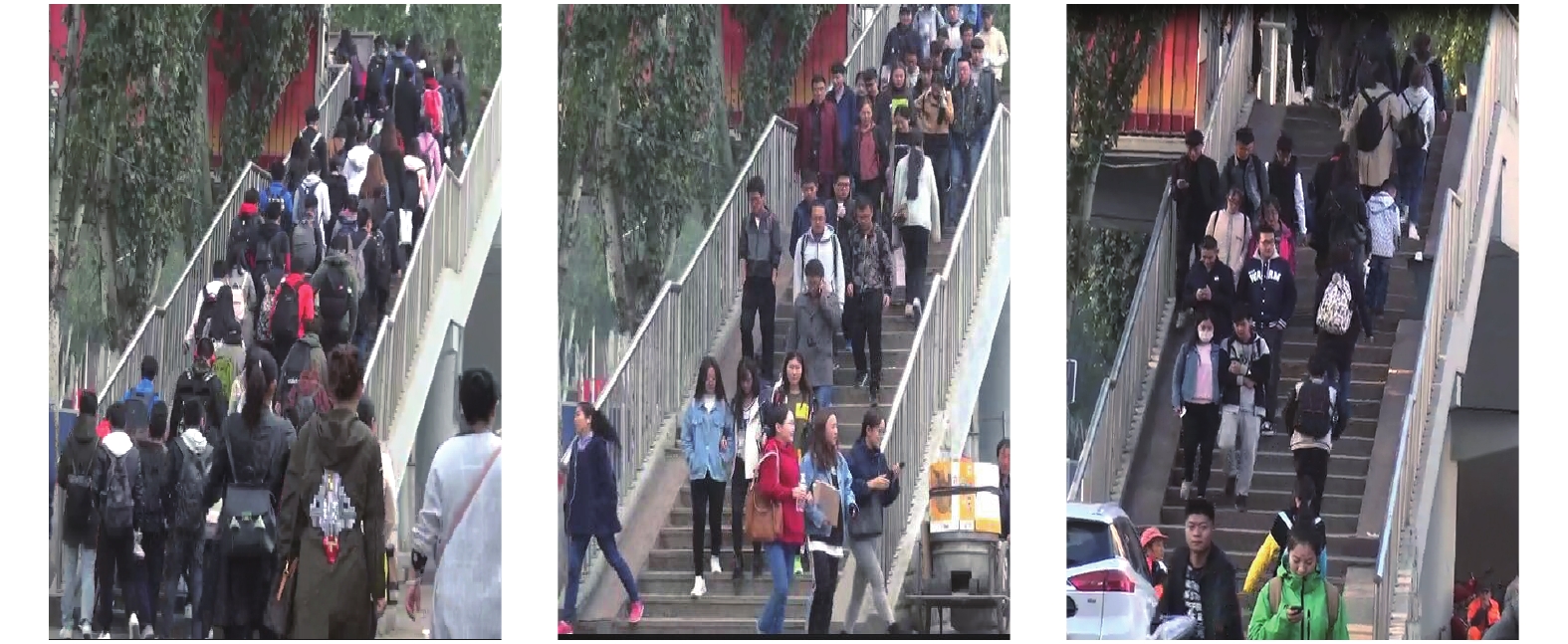
 下载:
下载:

